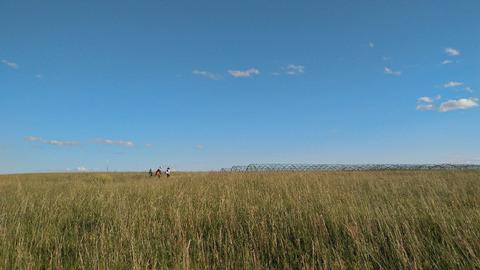当前位置:
X-MOL 学术
›
Funct. Ecol.
›
论文详情
Our official English website, www.x-mol.net, welcomes your feedback! (Note: you will need to create a separate account there.)
Plant‐bacteria‐soil response to frequency of simulated nitrogen deposition has implications for global ecosystem change
Functional Ecology ( IF 5.2 ) Pub Date : 2019-11-26 , DOI: 10.1111/1365-2435.13484 Jirong Cao 1 , Shuang Pang 1, 2 , Qibing Wang 1 , Mark A. Williams 3 , Xiu Jia 1, 2 , Shasha Dun 1, 2 , Junjie Yang 1 , Yunhai Zhang 1 , Jing Wang 1, 2 , Xiaotao Lü 4 , Yecui Hu 5 , Linghao Li 1 , Yuncong Li 6 , Xingguo Han 1
Functional Ecology ( IF 5.2 ) Pub Date : 2019-11-26 , DOI: 10.1111/1365-2435.13484 Jirong Cao 1 , Shuang Pang 1, 2 , Qibing Wang 1 , Mark A. Williams 3 , Xiu Jia 1, 2 , Shasha Dun 1, 2 , Junjie Yang 1 , Yunhai Zhang 1 , Jing Wang 1, 2 , Xiaotao Lü 4 , Yecui Hu 5 , Linghao Li 1 , Yuncong Li 6 , Xingguo Han 1
Affiliation

|
Atmospheric nitrogen (N) deposition, generally, has been simulated through a single or relatively few N applications per year for its ecological effect study. Despite the importance of timing in ecosystem processes, ecological experiments with more realistic N addition frequencies are rare. We employed a novel design with typical twice (2X) versus atypical monthly (12X) N applications per year to explore effects of N addition frequency on above‐ and below‐ground biodiversity and function. Each year, several response variables from either below‐ground or above‐ground growth, N status and cycling, or plant and bacterial diversity differed as a result of N addition frequency. BNPP showed a large frequency effect in the relatively moist year but not in the dry year. Nitrogen addition decreased root growth in the monthly relative to the biannual applications, which could be highly consequential for predicting changes in global carbon and nitrogen cycling. Simulated N deposition tended to perturb biodiversity, but it is noteworthy that 12X applications that spread N deposition more evenly through a year have much less negative impacts on plant and bacterial diversities than 2X amendments per year. Soil N mineralization rate in year 6 was much lower when N additions were monthly compared with a biannual amendment, especially when simulated N deposition was high. We have established that amendment frequency matters for understanding ecosystem response to N deposition. Experiments that more closely mimic the anthropogenic process of N deposition are needed to best assess ecosystem and potential global biogeochemical changes. A free Plain Language Summary can be found within the Supporting Information of this article.
中文翻译:

植物-细菌-土壤对模拟氮沉降频率的响应对全球生态系统变化有影响
通常,大气氮 (N) 沉积是通过每年一次或相对较少的 N 应用来模拟的,用于其生态效应研究。尽管时间在生态系统过程中很重要,但具有更现实的氮添加频率的生态实验很少见。我们采用了一种新颖的设计,每年两次 (2X) 与非典型的每月 (12X) 施氮,以探索施氮频率对地上和地下生物多样性和功能的影响。每年,来自地下或地上生长、氮状态和循环或植物和细菌多样性的几个响应变量因氮添加频率而异。BNPP 在相对湿润的年份表现出较大的频率效应,但在干燥年份则没有。相对于两年一次的施用,氮添加降低了每月根系生长,这对于预测全球碳和氮循环的变化可能具有重要意义。模拟的氮沉降往往会扰乱生物多样性,但值得注意的是,与每年 2 倍的修正相比,在一年中更均匀地传播氮沉降的 12 倍应用对植物和细菌多样性的负面影响要小得多。与两年一次的修正相比,每月添加 N 时的第 6 年土壤 N 矿化率要低得多,尤其是当模拟 N 沉积量较高时。我们已经确定修正频率对于理解生态系统对 N 沉积的响应很重要。需要更密切地模拟氮沉积的人为过程的实验,以最好地评估生态系统和潜在的全球生物地球化学变化。可以在本文的支持信息中找到免费的普通语言摘要。
更新日期:2019-11-26
中文翻译:

植物-细菌-土壤对模拟氮沉降频率的响应对全球生态系统变化有影响
通常,大气氮 (N) 沉积是通过每年一次或相对较少的 N 应用来模拟的,用于其生态效应研究。尽管时间在生态系统过程中很重要,但具有更现实的氮添加频率的生态实验很少见。我们采用了一种新颖的设计,每年两次 (2X) 与非典型的每月 (12X) 施氮,以探索施氮频率对地上和地下生物多样性和功能的影响。每年,来自地下或地上生长、氮状态和循环或植物和细菌多样性的几个响应变量因氮添加频率而异。BNPP 在相对湿润的年份表现出较大的频率效应,但在干燥年份则没有。相对于两年一次的施用,氮添加降低了每月根系生长,这对于预测全球碳和氮循环的变化可能具有重要意义。模拟的氮沉降往往会扰乱生物多样性,但值得注意的是,与每年 2 倍的修正相比,在一年中更均匀地传播氮沉降的 12 倍应用对植物和细菌多样性的负面影响要小得多。与两年一次的修正相比,每月添加 N 时的第 6 年土壤 N 矿化率要低得多,尤其是当模拟 N 沉积量较高时。我们已经确定修正频率对于理解生态系统对 N 沉积的响应很重要。需要更密切地模拟氮沉积的人为过程的实验,以最好地评估生态系统和潜在的全球生物地球化学变化。可以在本文的支持信息中找到免费的普通语言摘要。


























 京公网安备 11010802027423号
京公网安备 11010802027423号